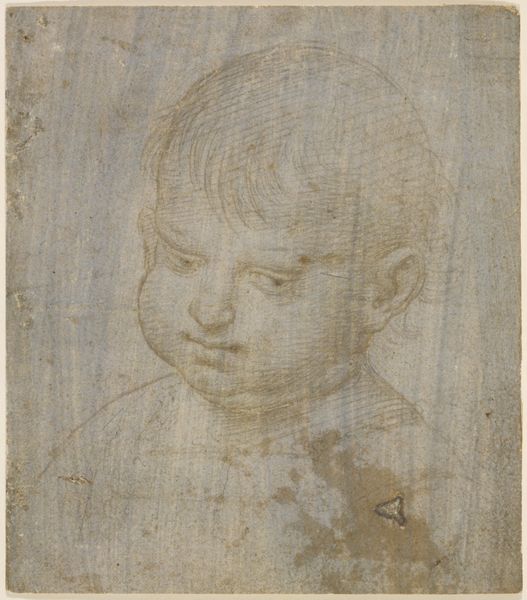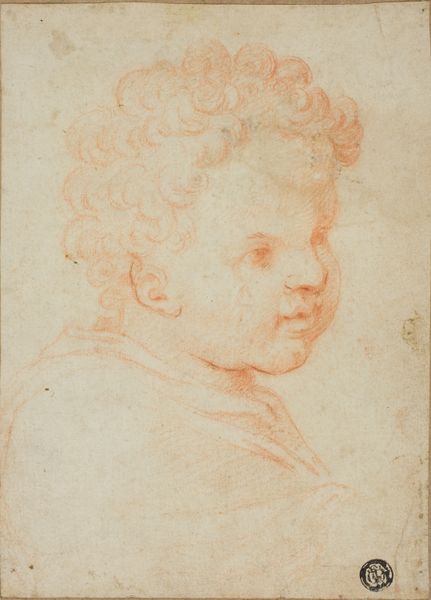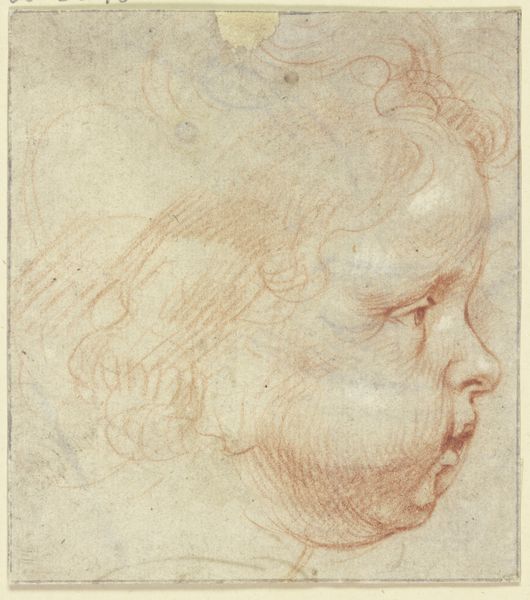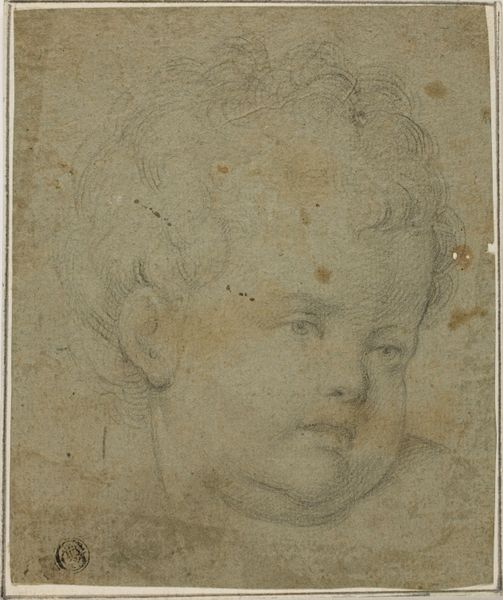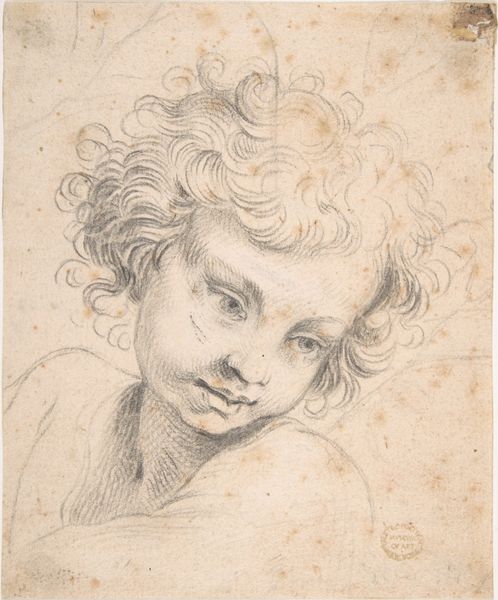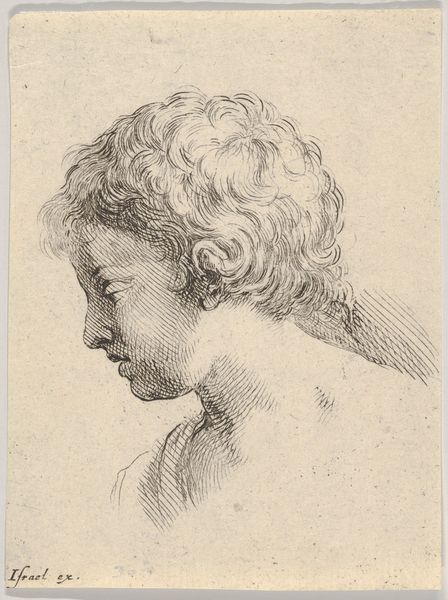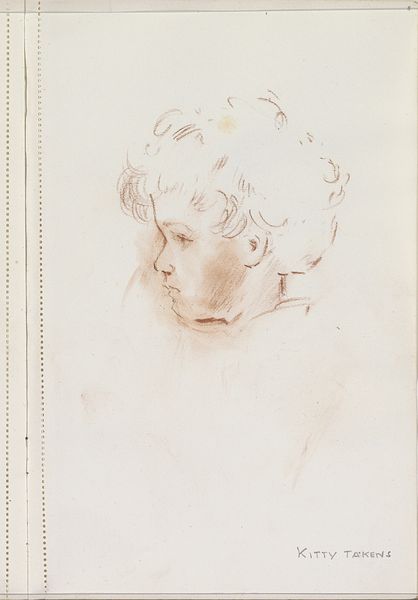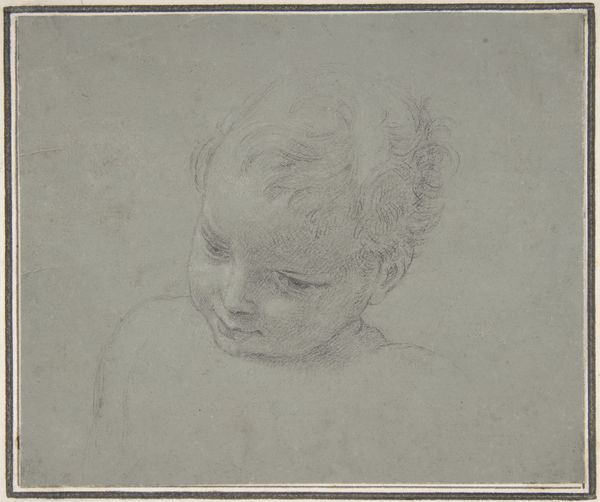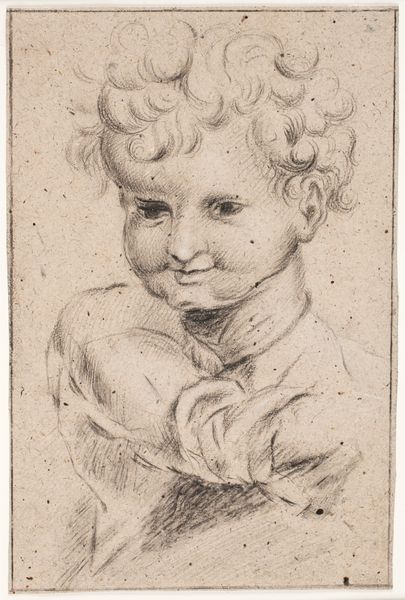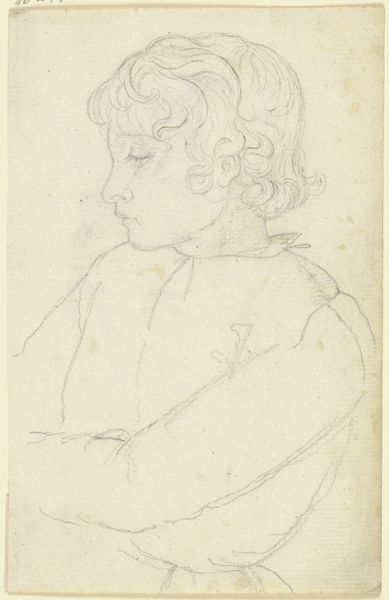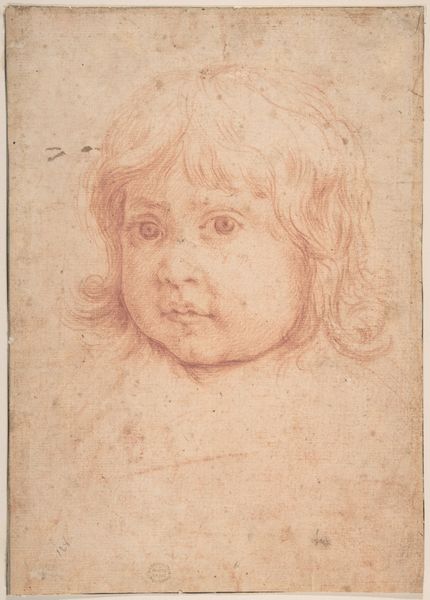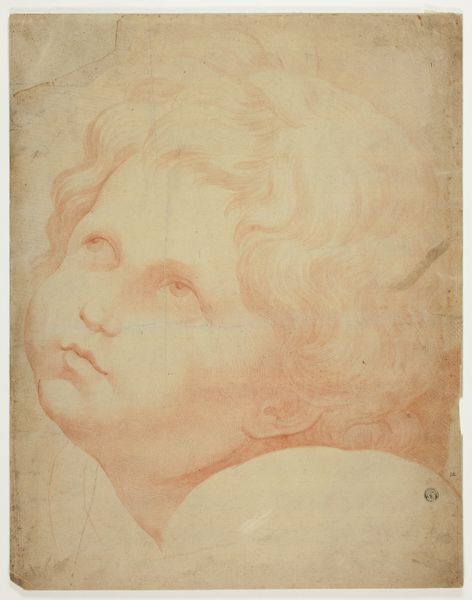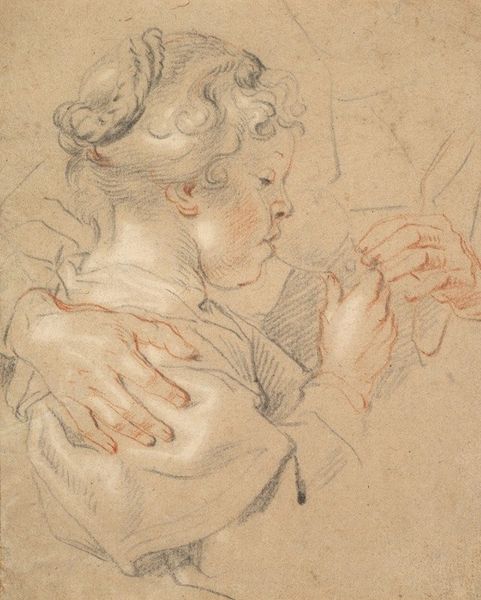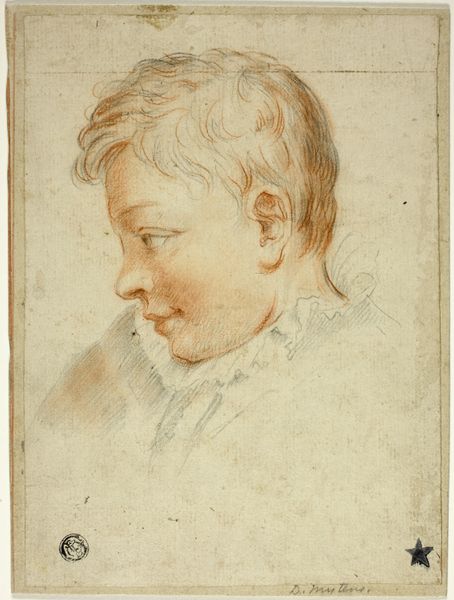
drawing, paper, pencil, chalk, charcoal
portrait
drawing
charcoal drawing
paper
pencil drawing
pencil
chalk
portrait drawing
charcoal
academic-art
Dimensions: 130 × 138 mm
Copyright: Public Domain
Editor: This is "Child's Head" by Donato Creti, created using pencil, chalk, and charcoal on paper. It feels like a very traditional study of a child's head, focusing on light and shadow. What catches your eye? Curator: The drawing itself is an object produced under certain economic and social conditions. We see the availability of specific materials—chalk, charcoal, paper. These weren’t universally accessible. Who had access to these materials, and what does that tell us about art production during that period? Was Creti commissioned to make the portrait? And who was the child; their socioeconomic standing may say something about material reality as a driver for portrait commissions in those times. Editor: So, you're saying the materials themselves point to a larger social and economic story? I never thought about chalk as having a specific history or accessibility! Curator: Exactly! Consider the labour involved. Someone had to source and produce the chalk and charcoal. And Creti himself, dedicating his time and skill—his labour—to create this. The existence of the work is a testament to specific systems of production and consumption. Are there similar head drawings by Creti, that might hint to a series of commissions perhaps driven by educational or marketing means for the elite class. Editor: That makes me think differently about even the act of drawing itself. I've always focused on the artistic expression, but you're making me think about the economic drivers behind the art itself. Curator: Precisely. We can investigate who might have been buying, or otherwise supporting art production, whether in service to nobility and religious elite, as was so common for artists and artisanal laborers in Italy in the late 17th-18th centuries. Or perhaps serving commercial activity like new consumerist-oriented portrait offerings, for an emergent European middle class. How much were drawing such as these being commodified in those days? Editor: So, even something as seemingly simple as a child's head study connects to huge shifts in materials, labor, and the art market. Thanks! Curator: Precisely! Considering these connections helps us see the drawing not just as an image, but as a tangible trace of complex historical forces.
Comments
No comments
Be the first to comment and join the conversation on the ultimate creative platform.
